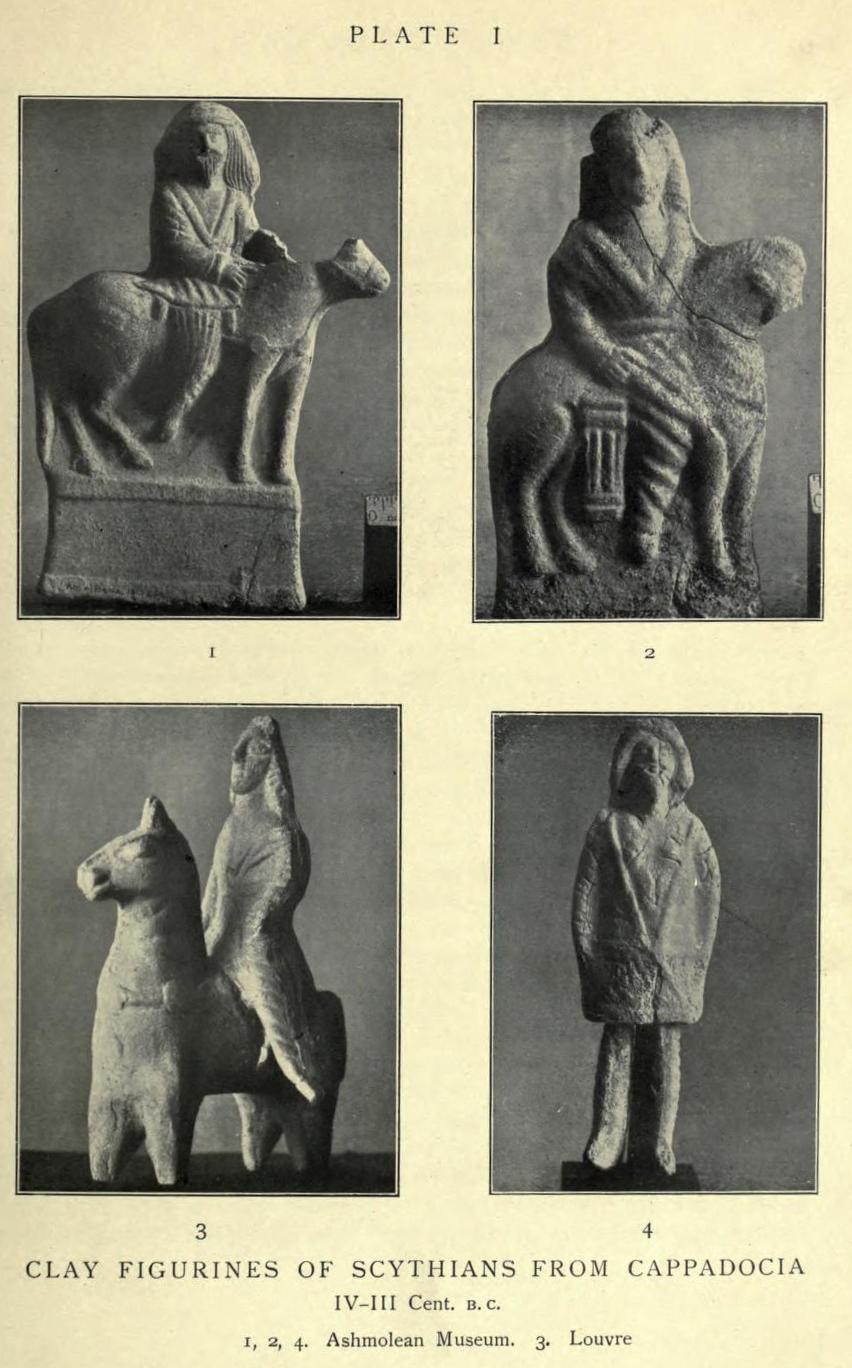
Amazon Audible Gift Memberships
Terra-cotta Statuettes of Skythians from Pontus and Cappadocia, 4th-3rd century BC.
Ashmolean Museum and Louvre.



We observe also remarkable analogies between certain products of Cappadocian art and objects found in Scythian graves of the period between the sixth and the third centuries B.C. I would draw the reader's attention to a number of cast bronze pole-heads which have been discovered in Cappadocia (pl. II and pl. V, 3) : some-times representing an animal perched on a rattle, sometimes a figure or a pair of figures, geometrically stylized, of the Great Goddess of Asia. The only parallels to these curious objects, of which there are several examples in the Louvre and in the British Museum, are furnished by pole-tops found in Scythian barrows of the period between the sixth and third centuries b. c., and in Western Siberia. Let me also mention the terra-cotta statuettes from Pontus and Cappadocia in the Ashmolean Museum and in the Louvre, which undoubtedly represent Scythian horsemen (pl. I). These horsemen are treated in the same manner and in the same style as the Scythian horsemen on works of Panticapaean toreutic dating from the fourth or third centuries B.C.
In conclusion, I would draw attention to a curious coincidence : terra-cotta wagons have been found in Pontus and in Cappadocia which reproduce, beyond all doubt, the wheeled abodes of the nomads: a well-preserved example may be seen in the Ashmolean Museum. Now, as far as I know, the only analogous objects come from South Russia. We have two series of them, one belonging to the Bronze Age, the other to the first and second centuries A. D. A chariot which closely resembles the Ashmolean specimen was found in a Kuban grave of the Bronze Age : a whole group, of much finer execution, in Panticapaean graves of the first and second centuries a. d.
These resemblances between the two shores of the Euxine cannot be explained by commercial intercourse, but only by community of race ; by the existence of similar layers of population in both regions : a layer which may be called autochthonous ; a Thraco-Cimmerian ; and a Scytho-Iranian layer.
Source: Iranians & Greeks in South Russia by Rostovtsev, Mikhail Ivanovich (1922)